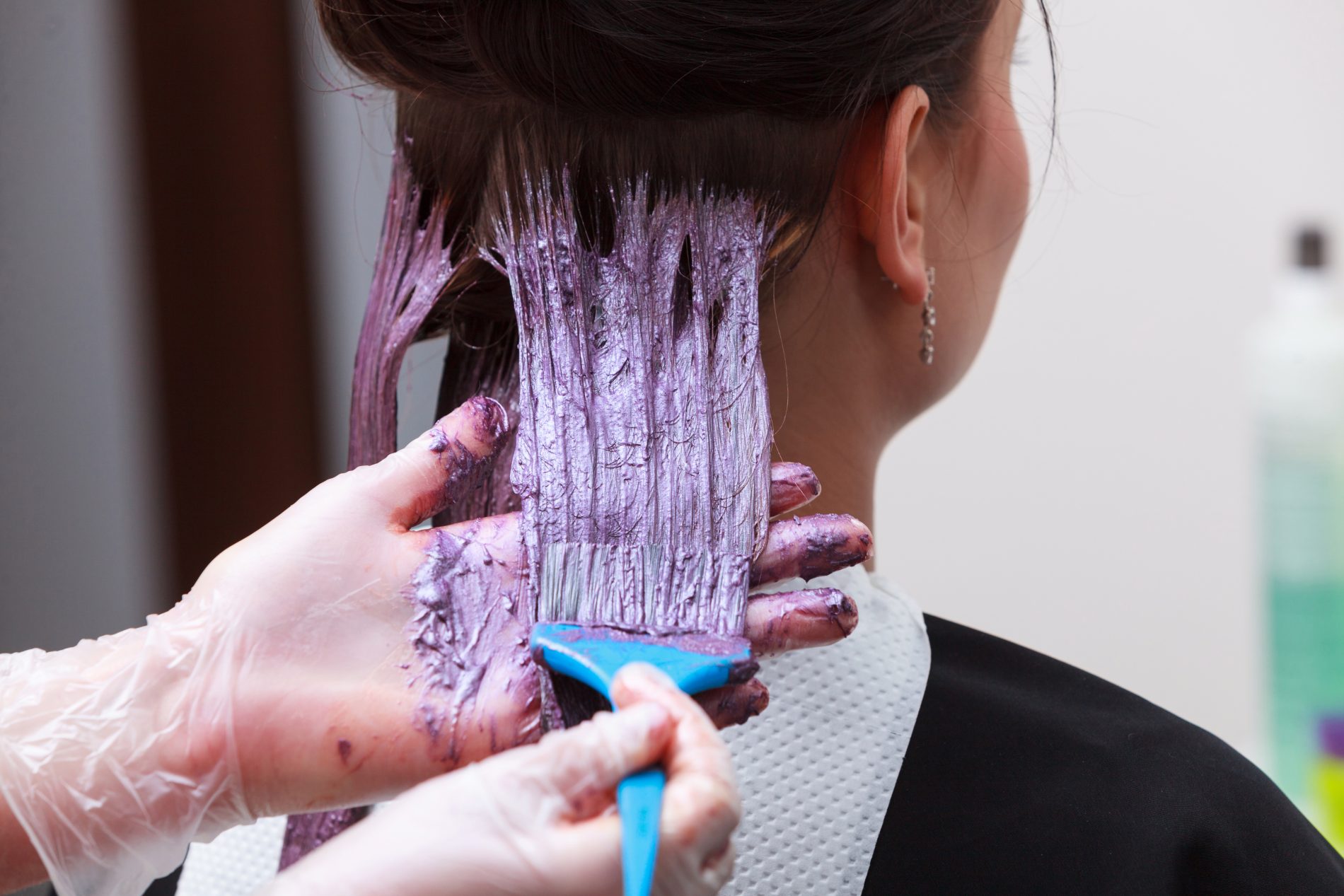WHAT CAUSES SCALP BLISTERS?
One of the worst reactions to hair dye is scalp blisters or burns. We’ve all heard horror stories about allergic reactions happening after a visit to the salon or using a DIY dye kit at home, but how does scalp damage occur?
Unfortunately, some people are prone to skin reactions, commonly known as contact dermatitis. This type of eczema is triggered after coming into contact with a particular ingredient or substance. Signs of dermatitis include itchy, dry, red, inflamed and blistered skin, usually appearing within a few hours or even days after exposure to an allergen.
Many hair dyes (both permanent and semi-permanent) contain chemicals damaging to the skin, including a well-known irritant and allergen called PPD (p-Phenylenediamine), which is the cause of most reactions. Darker-coloured hair dyes often have higher PPD levels in them.
SHOULD YOU AVOID PPD?
If you want to avoid PPD, it’s best to stop dying your hair altogether, as this type of chemical is required to trigger the colouring process. Even in products that have PPD alternatives, allergens can still be present.
While a salon should take a history of hair dye reactions, you can develop new allergies at any stage of life. That’s why it’s vital to carry out new patch tests (even with products used before) every six months. This involves a small amount of dye being applied behind the ear or inner elbow about 48 hours before a treatment, looking for any signs of irritation.
If this step is missed or you go ahead despite a reaction, one of the consequences can be painful scalp blisters, often seen along the hairline. You may also feel a burning or stinging sensation. In severe cases, a true allergic reaction can occur, triggering symptoms throughout the body and making you feel unwell.
WHAT ARE THE BEST HAIR DYE PRECAUTIONS?
Patch tests are the best precaution for identifying sensitivities or allergies to hair colouring products.
However, even if the hair dye treatment goes ahead after successful patch testing, other safety procedures and processes should be followed to avoid skin and hair damage. This includes only leaving the hair dye on for the recommended time, thoroughly rinsing hair afterwards and following all manufacturer instructions.
If any signs of a reaction occur (even after a clear patch test), the hair and scalp should be thoroughly washed to remove excess dye and an emollient applied to the affected skin. You should seek medical advice, and steroid creams may be recommended.
CONTACT HAIRDRESSING CLAIMS
Have you suffered scalp damage after a salon visit? Contact Hairdressing Claims. To speak to an advisor, call 0800 141 3682 (freephone), 0333 202 6560 (from a mobile), or email enquiries@hairdressingclaims.co.uk.

